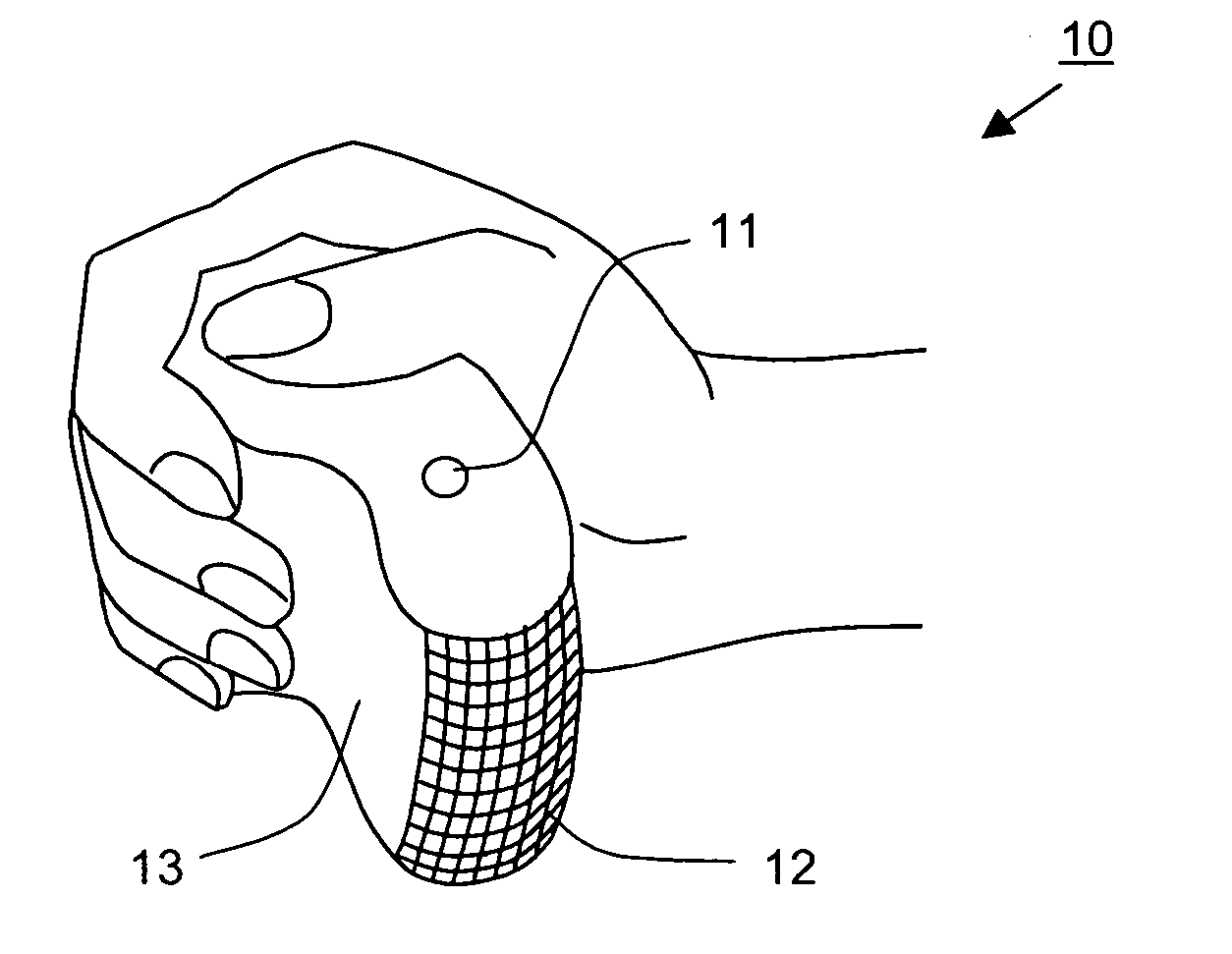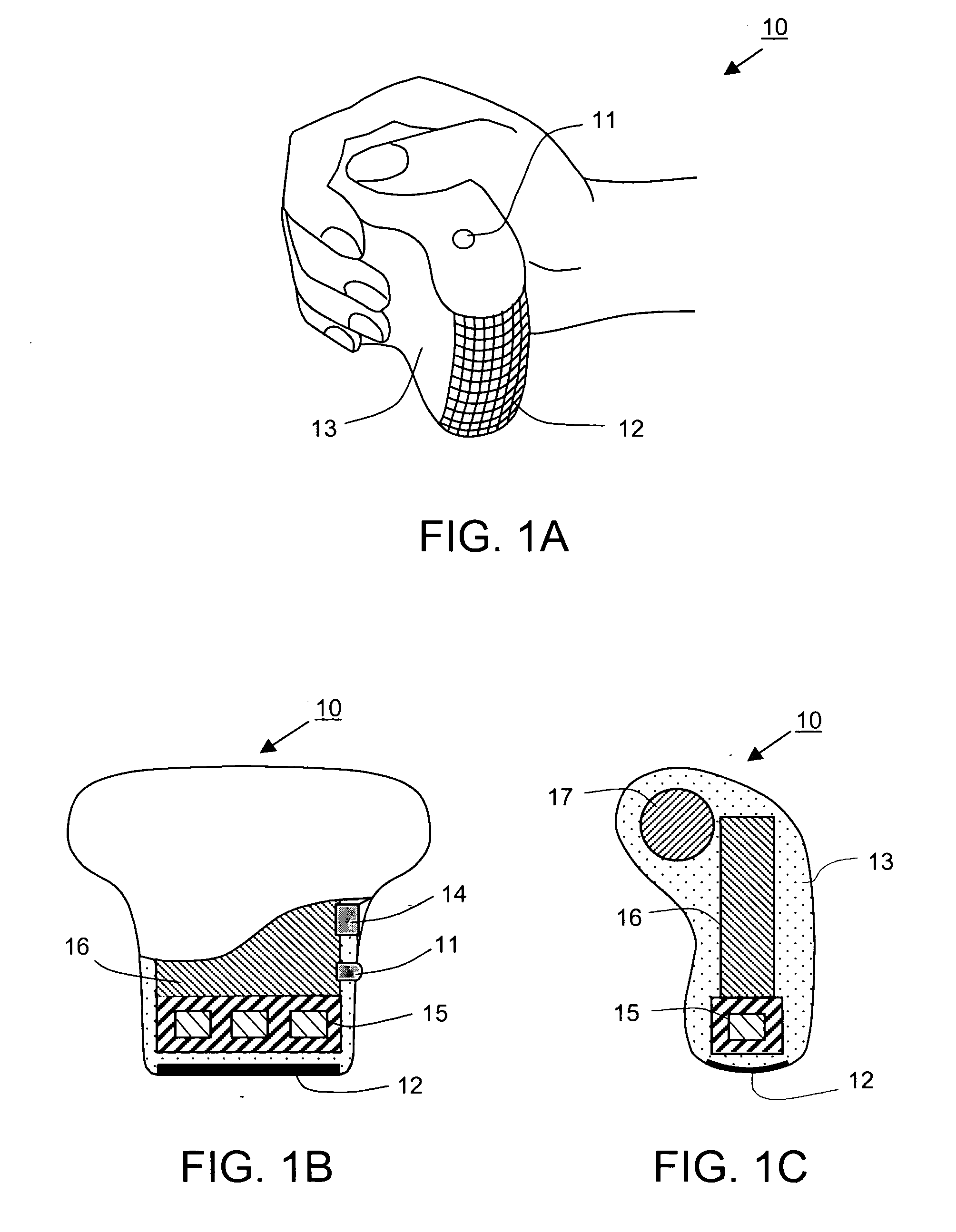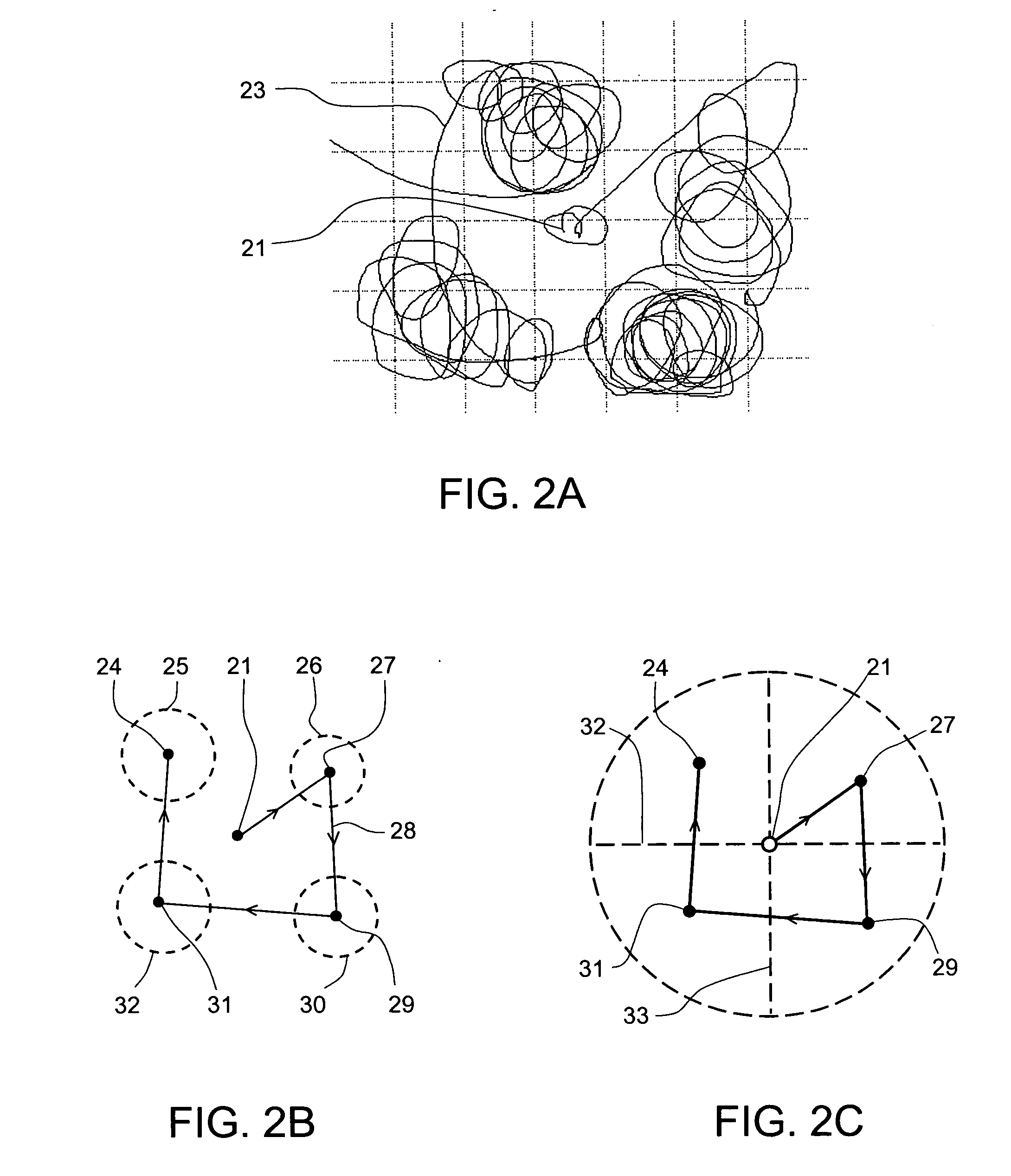Tactile breast imager and method for use
a breast imager and tactile technology, applied in the field of tactile breast imager and method for use, can solve the problems of limiting such frequency, high cost of frequent examination, and the possibility of small tumors in mammography
- Summary
- Abstract
- Description
- Claims
- Application Information
AI Technical Summary
Benefits of technology
Problems solved by technology
Method used
Image
Examples
first embodiment
[0036] FIGS. 1A, 1B and 1C show a hand-held self-palpation tactile imaging device 10 for detecting and locating a lesion in breast tissue in accordance with the present invention. The device 10 comprises pressure sensing means such as a 2-D tactile sensor array 12, a positioning data means such as an inertial motion tracking sensor 15, an electronic unit 16, a power supply 17, a computer connector 14, and an output signal source 11, all of which are mounted in a housing 13 adapted for easy grip by a human hand. Tactile sensor array 12 generates signals in response to pressure imposed on a pressure-sensing surface as it is pressed against and moved over the breast or another type of soft tissue. Tactile sensor array 12 comprises a matrix of tactile sensing elements measuring discretely contact pressure between the surfaces of the sensing elements and breast tissue. Motion tracking system 15 for generating signals in response to motion of the device 10, can include accelerometers, mag...
second embodiment
[0042] FIGS. 4A and 4B show a hand-held self-palpation device 20 for detecting and locating a lesion in breast tissue in accordance with the present invention. The device 20 comprises 2-D tactile sensor array 41, a patchboard 43 with buttons 44-46, an output signal source 47, all of which are mounted in a housing 42. During the breast self-examination, a patient is putting this device on her fingertips. Tactile sensor array 41 generates signals in response to pressure imposed on a pressure-sensing surface as it is pressed against and moved over the breast. The buttons 44, 45, 46 are intended for hand entering information about which breast and which quadrant of the breast is under examination. The patchboard 43 and housing 42 include all necessary electronics for storing and preliminary processing acquired tactile data. Scanning area location data are stored in a device recording system. After the breast examination is complete, the examination data can be transmitted to a home comp...
third embodiment
[0043] FIG. 5 represents a hand-held self-palpation device 30 for detecting and locating a lesion in breast tissue in accordance with the present invention. The device 30 comprises 2-D tactile sensor array 51 mounted on a touch pad 52 and an electronic unit 56 with a display means 55 optionally secured on a patient's wrist or hand by a strap 54. During the breast self-examination, the patient can in real-time environment observe the results of breast examination and communicate with device 30 by means of control buttons 53. Along with that the patient can enter the information about position of the local scanning zone using data entry means such as buttons 57. The device 30 allows transmission of received breast examination data into a home computer.
PUM
 Login to View More
Login to View More Abstract
Description
Claims
Application Information
 Login to View More
Login to View More - R&D
- Intellectual Property
- Life Sciences
- Materials
- Tech Scout
- Unparalleled Data Quality
- Higher Quality Content
- 60% Fewer Hallucinations
Browse by: Latest US Patents, China's latest patents, Technical Efficacy Thesaurus, Application Domain, Technology Topic, Popular Technical Reports.
© 2025 PatSnap. All rights reserved.Legal|Privacy policy|Modern Slavery Act Transparency Statement|Sitemap|About US| Contact US: help@patsnap.com



